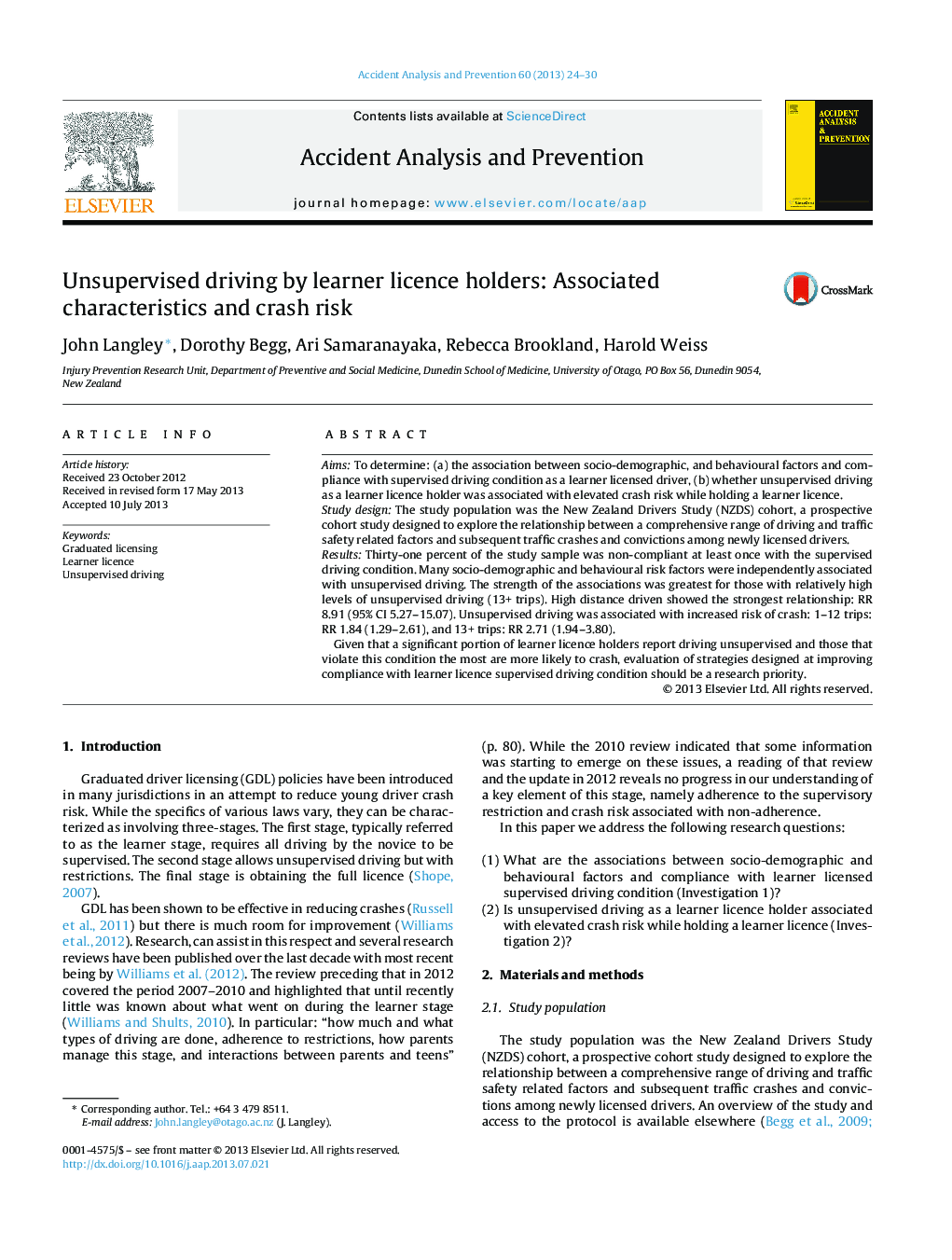| Article ID | Journal | Published Year | Pages | File Type |
|---|---|---|---|---|
| 572402 | Accident Analysis & Prevention | 2013 | 7 Pages |
•Unsupervised driving under a learner licence is common.•Many socio-demographic and behavioural risk factors are independently associated with unsupervised driving.•Unsupervised driving is associated with increased risk of crash.
AimsTo determine: (a) the association between socio-demographic, and behavioural factors and compliance with supervised driving condition as a learner licensed driver, (b) whether unsupervised driving as a learner licence holder was associated with elevated crash risk while holding a learner licence.Study designThe study population was the New Zealand Drivers Study (NZDS) cohort, a prospective cohort study designed to explore the relationship between a comprehensive range of driving and traffic safety related factors and subsequent traffic crashes and convictions among newly licensed drivers.ResultsThirty-one percent of the study sample was non-compliant at least once with the supervised driving condition. Many socio-demographic and behavioural risk factors were independently associated with unsupervised driving. The strength of the associations was greatest for those with relatively high levels of unsupervised driving (13+ trips). High distance driven showed the strongest relationship: RR 8.91 (95% CI 5.27–15.07). Unsupervised driving was associated with increased risk of crash: 1–12 trips: RR 1.84 (1.29–2.61), and 13+ trips: RR 2.71 (1.94–3.80).Given that a significant portion of learner licence holders report driving unsupervised and those that violate this condition the most are more likely to crash, evaluation of strategies designed at improving compliance with learner licence supervised driving condition should be a research priority.
